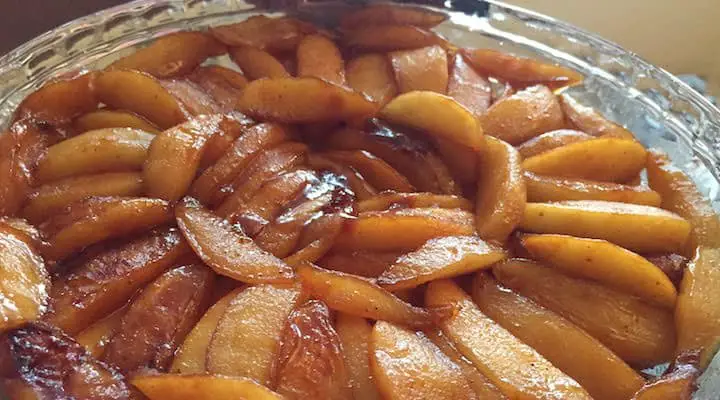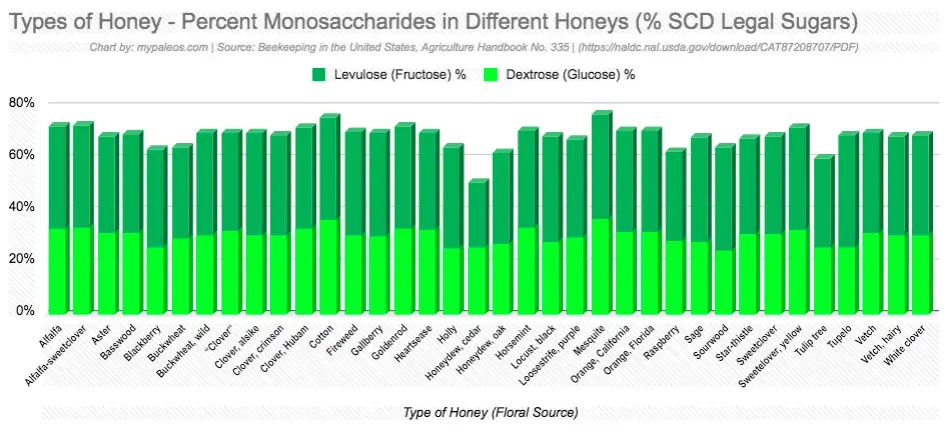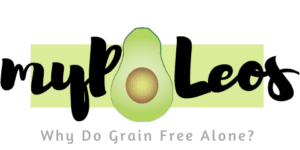
I often wondered when starting on the Specific Carbohydrate Diet which sweeteners were actually allowed on the diet. I decided to pull together everything I could find on the subject into a single resource.
Which sweeteners are SCD legal?
| Sweetener | Notes from Official Breaking the Viscious Cycle Website |
| Honey | (RECOMMENDED) |
| saccharine | Personally would not recommend. from BTVC: “Deborah writes: Sweet N Low is legal, in spite of the tiny quantities of dextrose and cream of tartar, because it’s the most easily found form of saccharine. But if you can find Necta Sweet or liquid Sweet N Low, you’ll avoid those substances. CVS has always carried Necta Sweet. I’m sure they can order it for you. Liquid Sweet N Low is not ideal, as it’s preserved with methyl paraben. We are all exposed to so many chemicals (pesticides, some plastics and more) that are estrogenic in their effect – it’s not a good idea to voluntarily consume more. Necta Sweet is really the best form of saccharine available in the States, but it’s hard to find and slightly less convenient than Sweet N Low. I believe there’s also a brand of saccharine in Canada that doesn’t have the illegals (ed. Hermesetas). But if you can’t find Necta Sweet, I wouldn’t worry too much about using Sweet N Low….. For those of us who can’t tolerate honey, Sweet N Low has been very helpful.” |
| Aspartame | Personally would not recommend. from BTVC: “When symptom free, one aspartame sweetened soft drink per week is allowed – Elaine. But see Aspartame in Knowledge Base.” |
But there are a number of other potential options to sweeten your recipes on the Specific Carbohydrate Diet, as well as some caveats with some of these “approved” sweeteners. We’ll cover those details in this article.
Alternative/Healthy SCD Diet Sweeteners
Alternatively, you might consider using SCD legal ingredients to naturally add sweetness to recipes such as (just some examples):
- baked goods
- sauces
- compotes
- smoothies
- salads
As a specific example, you might consider adding extra ripe bananas to provide the sweetness to a lightly sweetened banana bread recipe or apple slices to an apple crumble recipe. Here’s a list of some potential SCD legal whole ingredient sweeteners – cooking will often bring out extra sweetness in many fruits:
| Sweetener | Notes from Official Breaking the Viscious Cycle Website |
| Apple Cider | “It is brown and not clear as apple juice is. It should be just straight pressed apples. It is usually pasteurized in order to kill bacteria” |
| Apples | |
| Bananas | “They must be ripe with black spots on the skin.” |
| Cherries | |
| Dates | “Medjool and California dates are allowed. They must be loose and not have anything added.” |
| Figs | “Figs unpolluted by chemicals or additives are fine, however I find them, especially in dried form; to be a laxative. They also contain hundreds of tiny hard seeds which can be hard on the intestines. I’m still unable to tolerate them after almost a year on the SCD. If I were you I’d leave figs until you’ve been symptom free for at least a while. – Rob B” |
| Melon | “All types are Legal” |
| Mango | |
| Pineapple | |
| Plums | |
| Prunes | |
| Raisins | “Try them cautiously.” |
In case it’s also helpful to also have a dedicated list of sweeteners to specifically AVOID on the SCD diet, here is a list of SCD illegal sweeteners based on the BTVC lists of illegal ingredients:
SCD Illegal Sweeteners
| Illegal Sweetner | Notes from Official Breaking the Viscious Cycle Website |
| Agave syrup | |
| Bee Pollen | “Pollen is irritating to a damaged gut. Clear, pure, pasteurized honey is okay. Cloudy honey (still containing the pollen) should be avoided. – Sheila” |
| Evaporated cane juice | “Fancy name for sugar” |
| Date sugar | “May be tried after being on the diet for quite sometime and symptom free but it is not recommended.” |
| Corn syrup | |
| Granulated glucose | “It is known to contains other sugars in addition to glucose.” |
| FOS (fructooligosaccharides) | “Also known as fructooligosaccharides. See, FOS in the Knowledge Base section.” |
| Dextrose | “The problem with the dextrose and fructose which is being sold as a granulated form as well as the dextrose contained in commercial products is that it is not pure dextrose which should be the same as the single sugar glucose found in fruits and honey.” |
| Inositol | “Inositol is a sugar alcohol. Sugar alcohols will feed bacteria and that is something we do not want to do. Sugar alcohols generally cause diarrhea but small amounts in supplements are ok – Elaine” |
| Inulin | “Inulin is a FOS and is illegal, see Inulin” |
| Isoglucose | “It is a new sweetener likely to be used in many products in future. See Isoglucose” |
| Juice from concentrate | “Juice from concentrate is normally illegal because when it is reconstituted they often add other things (like sugar). Often additives are not listed on the label” |
| Maltitol | “Sorbitol, mannitol, and xylitol are all sugar alcohols and are not SCD(TM) legal. They fall under the category of indigestible carbs and sugars, and so allow companies to label things ‘sugar free’, even though they are providing nutrition to the bacteria that live in your digestive tract.” |
| Maltodextrin | “Maltodextrin is the worst of the small molecules of sugars. It is a very short chain of glucose molecules (derived from starch). The chances of digestion are practically nil. It therefore will feed bacteria and because of its particular structure, Elaine feels it is worse than even lactose.” |
| Mannitol | “Sorbitol, mannitol, and xylitol are all sugar alcohols and are not SCD(TM) legal. They fall under the category of indigestible carbs and sugars, and so allow companies to label things ‘sugar free’, even though they are providing nutrition to the bacteria that live in your digestive tract.” |
| Maple syrup | Maple syrup is a disaccharide. |
| Molasses | |
| Pectin | “It is a polysaccharide which, in the presence of acid and sugar, gels. It is used as a thickener in jams, and occurs naturally in some fruit, like apples. In apples, it’s mostly in the peel, and for someone beginning the diet, you normally wouldn’t get too much from eating an apple, because you’d peel it. Pectin as an added ingredient is not legal, as it is a complex sugar” |
| Molasses | |
| Sorbitol | “Sorbitol, mannitol, and xylitol are all sugar alcohols and are not SCD(TM) legal. They fall under the category of indigestible carbs and sugars, and so allow companies to label things ‘sugar free’, even though they are providing nutrition to the bacteria that live in your digestive tract.” |
| Splenda (Sucralose) | “There are several reasons why it is illegal, see Splenda” |
| Turbinado | “It is liquid cane sugar, therefore it is illegal.” |
| Xylitol | “Sorbitol, mannitol, and xylitol are all sugar alcohols and are not SCD(TM) legal. They fall under the category of indigestible carbs and sugars, and so allow companies to label things ‘sugar free’, even though they are providing nutrition to the bacteria that live in your digestive tract.” |
Source: Breaking the Viscious Cycle Website
Cautions with Some SCD Approved Sweeteners
Although listed as an possible alternatives to honey as calorie-free sweeteners on the SCD by Elaine Gotshall, you may want to exercise caution with Saccharine and Aspartame.
New research has come out in the last few decades that is relevant to these sweeteners in terms of health but also Crohn and Colitis in particular.
Problems with Saccharine and IBD
There has been some examination of a link specifically between Saccharine (Sweet N Low/NectaSweet) and IBD. This work is still at the hypothesis stage, but their analysis of the match between the incidence of IBD matching the patterns of usage of these alternative sweeteners seems pretty compelling.
For this reason, I would recommend avoiding these artificial sweeteners if at all possible and stick with honey as an alternative. After all symptoms are under control and your health is stable for a long period of time, you could always experiment with adding them back to your diet. However, based on the mechanisms suggested, it may take a long time for the effect of these sweeteners to kick in with IBD symptoms, so I would suggest avoiding them completely if at all possible.
Common Questions about SCD Legal Sweeteners
Even with the guidance provided in the legal/illegal lists and the BTVC book, there are still questions that are likely to come up surrounding the theory behind some of the distinctions between which types of sweeteners are allowed and which are not and some gray area sweeteners popular today that were not explicitly covered.
I will do my best to compile the information available on these subjects to complement the BTVC guidelines on sweeteners outlined so far.
Why is honey allowed on SCD?
One of the questions I get a lot when I start to explain the Specific Carbohydrate Diet requirements to family and friends is why does the SCD diet allow honey when other “natural” sweeteners like maple syrup, molasses or evaporated cane juice are not allowed.
It tends to be a bit involved for people who are just casually curious but there are real differences between honey and the majority of other sweeteners. It basically comes down to the type of sugar molecules in different types of sweeteners.
Honey, unlike the other sweeteners I mentioned, are primarily made up of glucose and fructose as the molecular structure and therefore are easy for your body to absorb directly, which is somewhat unusual when compared to most other natural and refined sweeteners. For example, here is the difference between standard table sugar and honey:
Sucrose (table sugar) passes through the stomach without
Source: Is Honey the Same as Table Sugar? University of Arizona
any digestion happening because of its disaccharide (a sugar
composed of two monosaccharides) composition. This means
that the enzymes in the stomach cannot break down the
glucose-fructose structure of table sugar until it reaches the
small intestine. Then the liver utilizes a few enzymes to convert
the molecules into glucose that is able to enter the bloodstream
for further use.
Honey is different because of the enzymes that are added
to the nectar by bees that divide the sucrose into two simple
sugars, fructose and glucose. These sugars are directly absorbed
by our bodies and are easier to digest.
The sweeteners mentioned above, molasses and evaporated cane juice all contain a large percentage of sucrose, so need further breaking down similar to table sugar described in the quote above.
The Specific Carbohydrate Diet guidelines, therefore, allow all types of honey. But if you are curious, I made the below graph to show the relative percentages of legal vs illegal sugar content of various varieties of honey.
Although all are fine, if you want to be extra careful and try to find one of the easiest honey’s for your body to process, this chart I put together might be interesting to look through:

Is date syrup SCD legal?
Date syrup, while technically SCD legal as an advanced stage food, is specifically not recommended according to the BTVC website.
Date Syrup is one of the handful of newer, more popular forms of alternative sugars increasingly being marketed for grain-free diets. But is it ok for the SCD?
The guidance on the BTVC website states that date syrup: “May be tried after being on the diet for quite some time and symptom free but it is not recommended.”
That is my own perspective as well. Date syrup is a more refined and therefore more concentrated form of the sugar than dates themselves. As it is, I try to keep my intake of dates to a relatively low level as compared to other fruits allowed on the SCD diet, as dates are naturally more similar to refined sugar than other fruits. Date syrup is an even more refined than dates themselves, so can only be that much more concentrated and problematic.
As a side note, I went down a bit of a rabbit hole attempting to compare the types of sugars in various varieties of dates. There is some evidence pointing to lower amounts of sucrose in certain date varietals, such as Barhi dates (which happen to be one of my favorite dates anyway – they have a nice caramel flavor).
Are Sugar Alcohols like Erythritol and Xylitol SCD Legal?
The sugar alcohols, examples including erythritol, sorbitol, mannitol, xylitol, isomalt, and hydrogenated starch hydrolysates, are not allowed on the SCD diet. According to the BTVC website: “They fall under the category of indigestible carbs and sugars, and so allow companies to label things ‘sugar free’, even though they are providing nutrition to the bacteria that live in your digestive tract.”
Is sucrose SCD Legal?
Sucrose (the main element in table sugar) is not allowed on the SCD diet:
Sucrose is a disaccharide, which means that it is made
Source: Is Honey the Same as Table Sugar? University of Arizona
of two molecules, one glucose and one fructose, bonded
together. A common variety of sugar found in the juices of many
plants, as the sugar cane, sorghum, sugar maple, beet root, etc.
Is Manuka Honey SCD Legal?
Manuka honey specifically does not appear to have been weighted in upon by Elaine Godshall during her lifetime. She did, however, write that honey, in general, is legal on SCD, which presumably would apply to manuka honey as well.
In SCD guidelines put together by Seattle Children’s Hospital researchers who study the SCD diet with their patients, they do specifically cite a study on Manuka honey and the health benefits observed in rats with UC (taking Manuka honey) when talking about whether honey, in general, is legal on the SCD diet.
It’s up to you whether you feel you can extrapolate that into your own guidelines on which honey to choose on the SCD.
Is raw honey SCD legal?
Although honey is allowed on the SCD diet, a common question is whether raw honey is allowed. Below is a definition of what is considered raw honey from wikipedia:
Raw honey is as it exists in the beehive or as obtained by extraction, settling, or straining, without adding heat (although some honey that has been “minimally processed” is often labeled as raw honey).[76] Raw honey contains some pollen and may contain small particles of wax.
Source: wikipedia
According to the BTVC website, although honey is considered legal, bee pollen is not:
Pollen is irritating to a damaged gut.
The same post/explanation about bee pollen then goes on to say the following, which seems to indicate that raw honey would not be allowed on SCD:
Clear, pure, pasteurized honey is okay. Cloudy honey (still containing the pollen) should be avoided
Piecing this all together, it appears as though raw honey may not be considered SCD legal, as by definition it is honey often containing pollen. The only other consideration is that this page of the BTVC legal/illegal list was not written by Elaine Gottschall herself, and so it is up to you to decide if you trust this advice. Clearly, the admins of the BTVC website do, which is why they chose to include it in the legal/illegal list, but we all have to make our own decisions about some of these foods that had not been fully addressed by the work of Ms. Godshall.
Is monk fruit SCD legal?
Monk Fruit was not popular as a sweetener during the time of the life of Elaine Godshall and so she never weighed in on whether it is SCD legal, however Monk Fruit’s sweetness comes from a complex sugar molecule mogrosides) that requires enzymes of the body to break it down, similar to sucrose. For this reason it is highly unlikely that monk fruit would be considered SCD legal and should be avoided.
Is Stevia SCD legal?
Another common zero-calorie sweetener these days is stevia. Elaine Gottschall was alive when Stevia was around and specifically weighed in on it, saying that she recommended against it, except possibly in tiny quantities in supplements. In addition, as referenced above in our section on Saccharine, sucralose (Splenda) is hypothesized to be a potential root cause of IBD and gut permeability. I would suggest avoiding Splenda.
